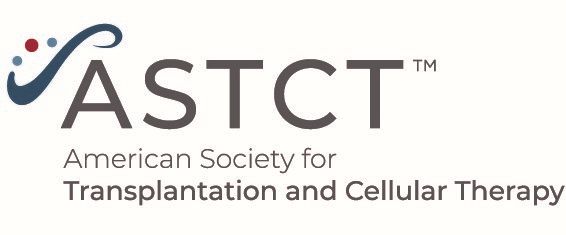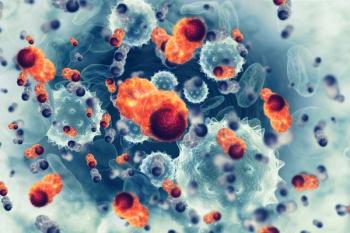
Outcomes of Patients on Transplant Waiting Lists: Q&A with Dr. Giancarlo Fatobene

The following was recently published in ASTCT’s Nucleus publication. Follow @ATSTCT for the latest on all-things cellular therapy.
We asked Dr. Giancarlo Fatobene from the University of Sao Paulo to discuss his work presented at the
This study highlighted the outcome of patients with multiple myeloma who are on the waiting list for transplantation in the Instituto do Câncer do Estado de Sâo Paulo, one of the largest heme-onc hospitals in Latin America.
Tell us, Dr. Fatobene, where did the idea to perform this study come from?
In Brazil and many resource-constrained countries, we face the unfortunate issue of waiting lists for transplantation. The idea for this study occurred while we were creating an AI-based application to prioritize patients waiting for transplantation. Although we prioritize patients whose underlying diseases are felt to be at higher risk of relapsing/progressing on waiting list, we realized our priority criteria were rather subjective. There is virtually no data on how to prioritize these patients because waiting lists are not a reality in developed countries. Therefore, we thought that studying this question would be relevant to our institution and other centers alike.
Can you give us a brief overview of healthcare coverage in Brazil and your center?
In Brazil, there is the private healthcare system and the public one. The private system consists of several insurance companies and hospitals and covers about 25% of the Brazilian population. In the private sector, there is usually no waiting time for transplantation. The public system, on the other hand, covers most of the population, yet there are waiting lists for some procedures such as HCT. My institution is completely public.
What are the usual first-line therapies available for patients with myeloma in your center in Sao Paulo?
Nowadays, VTD is our first line therapy. However, not long ago, it used to be CTD.
How many patients could be transplanted in a “standard of care” fashion first-line setting?
Well, approximately 70% of patients deemed eligible for auto-HCT by the gamopathy group underwent the procedure in first line. However, only 10% of patients received transplantation within six months from the start of the most recent line of systemic therapy.
What are the factors that intervene in the time to receive an auto transplant for patients with multiple myeloma?
Mostly the limited number of hospital beds for transplantation. However, other issues may also affect it, namely: central line placement, multidisciplinary evaluation, pre-transplant work-up and so on.
Did the probability to access transplant vary according to treatment received?
It was not a significant factor in the multivariate analysis, though there was a trend for lower likelihood of progressing/relapsing on waiting list for patients exposed to immunomodulators.
What is the picture of a hypothetical patient on the transplant waitlist? Do they continue therapy?
Yes, these patients usually remain on systemic therapy until transplantation.
How are transplant slots allocated in your center?
We have separate slots for allogeneic and autologous transplantation. For autologous HCT slots, we prioritize lymphoma patients over myeloma patients and germ cell tumors.
Are there standard local transplant referral criteria? Were there transplant candidates who were not referred for transplant, or how did you control for referral bias?
The referral criteria defined by the gammopathy group are age < 71 and no major comorbidity. In general, their referral threshold is quite low in order for the transplant team to decide whether the candidate is eligible or not. Unfortunately, we cannot rule out some degree of referral bias.
How did you and your colleagues account for transplant survivorship bias in this analysis?
To deal with survivorship bias in OS, we conservatively opted to censor patients with primary refractory disease at first progression in waiting list and those found to have any contraindication to auto-HCT at the time of inclusion in the waiting list. By doing this, we did not find a statistically significant difference in OS between patients undergoing auto-HCT or not.
What were the factors associated with disease progression?
In multivariate analysis, only non-IgG MM was significantly associated with progression in waiting list.
How many patients could receive transplant upon progression?
Only 29% of patients progressing or relapsing in waiting list subsequently received auto-HCT.
What are the limitations of the study?
There are several limitations in our study, the first being a retrospective analysis potentially affected by different biases, as mentioned above. Second, we point out that most patients in our cohort were not exposed to proteasome inhibitors at front-line therapy, which limits the applicability of this data to other populations. Third, most patients did not have FISH at MM diagnosis, which is a very important covariate for progression/relapse and OS. Finally, it is not definitely possible to attribute causality between remaining longer in waiting list and disease progression and relapse.
What are the future directions based on this study? How can you reduce waiting times and provide more cell therapies for the patients in need?
We have incorporated a prioritization rule for transplant candidates with underlying non-IgM MM waiting for transplant. We are also looking at risk factors for progression/relapse in waiting list among patients with lymphoma. By showing this data, we have negotiated the expansion of the number of transplant beds at our center along with the State Health Secretary.
Our center has performed outpatient auto-HCT for over 20 years. As many of our patients live in other cities or states in Brazil, and it may take patients living in the Great São Paulo Metropolitan Area over two hours to commute to our center, outpatient transplantation is not feasible for many of them. We have a partnership with an NPO that provides housing for auto-HCT patients close to the hospital, but it is still not enough for all patients waiting for transplant.
To address this hurdle, we are about to start conducting a clinical trial on the feasibility and safety of using wearable devices to remotely monitor patients at home. If this proves to be feasible and safe, we may set less stringent criteria for outpatient auto-HCT in the future. In addition, with the help from charity organizations, NPOs and the government, our transplant center has been given a large housing facility (currently under construction) in close proximity to the hospital for patients undergoing HCT.
Newsletter
Stay up to date on recent advances in the multidisciplinary approach to cancer.


